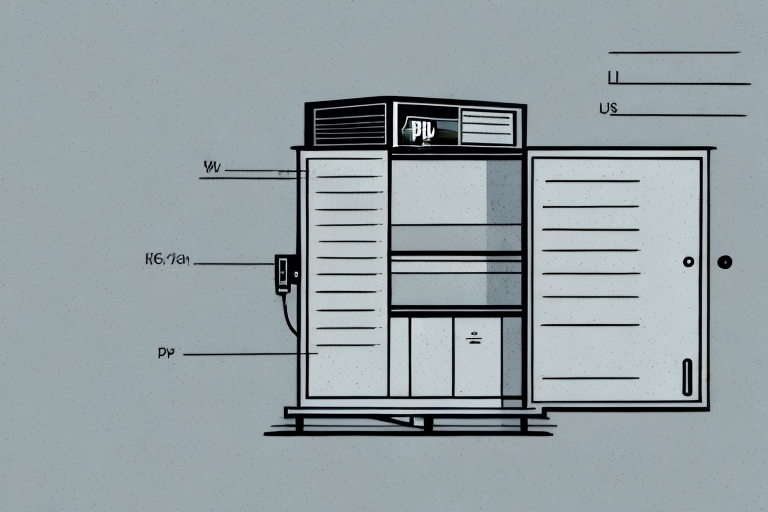Understanding UPS Box Dimensions
When shipping products or packages via UPS, selecting the right box size is paramount. UPS offers a diverse range of box sizes designed to accommodate everything from small items like books and DVDs to larger products such as clothing and electronics. This comprehensive guide explores the dimensions of UPS boxes and their impact on your shipping experience.
The Importance of Correct UPS Box Dimensions
Choosing the appropriate UPS box size ensures that your package arrives safely and cost-effectively. A well-fitted box prevents damage by securing the contents and minimizing movement during transit. This not only protects your items but also streamlines the shipping process, potentially saving you time and money.
Moreover, UPS calculates shipping costs based on the size and weight of the package. Using a box that's too large can result in higher shipping fees, while an undersized box might not accommodate your items properly, leading to damage and additional packaging materials.
UPS provides a variety of box sizes and shapes, allowing you to select the best fit for your shipping needs. For fragile items, opting for a box with extra padding or insulation is advisable. Conversely, consolidating multiple items in a larger box can reduce overall shipping costs.
Measuring and Selecting the Right UPS Box
How to Measure a UPS Box
Accurate measurement of your UPS box is essential. Begin by measuring the interior length, width, and height using a tape measure to obtain precise dimensions in inches. If you're shipping fragile items, include the dimensions of any additional padding to ensure the box size is adequate.
UPS has specific guidelines regarding the maximum weight and size of packages. If your shipment exceeds these limits, you may need to choose an alternative shipping method or divide your items into multiple packages. For the most current information on UPS's weight and size restrictions, visit the official UPS website.
Types and Dimensions of UPS Boxes
UPS offers a variety of box types, each tailored to different shipping needs:
- UPS Small Express Box: 13 x 11 x 2 inches
- UPS Medium Express Box: 17 x 12 x 3 inches
- UPS Large Express Box: 18 x 13 x 3 inches
- UPS Legal Express Box: 15 x 9.5 x 4.5 inches (ideal for documents)
- UPS Wardrobe Box: 24 x 24 x 40 inches (perfect for clothing)
- UPS Flat Rate Box: 12.25 x 12.25 x 6 inches
In addition to these standard options, UPS provides specialty boxes for specific items:
- UPS Wine Shipping Box: 18 x 14 x 9 inches, designed to transport up to 12 bottles of wine safely.
- UPS Laptop Box: 17 x 12 x 3 inches, offering extra protection for laptops during shipping.
Remember, the dimensions listed are exterior measurements. When packing, consider the interior space and any necessary padding to ensure your items are secure.
Selecting the Appropriate Box Size for Your Shipping Needs
Factors to Consider
When choosing a UPS box, consider the following factors:
- Item Size and Weight: Ensure the box can comfortably accommodate your items without being excessively large.
- Destination: International shipping may have different size and weight restrictions.
- Shipping Method: Different services may have specific box requirements.
Additionally, factor in any extra padding or protection your items might need. Properly measuring and selecting the right box size can enhance the safety of your shipment and reduce the risk of damage.
Cost and Environmental Considerations
Shipping costs are influenced by both the size and weight of your package. Larger boxes typically incur higher shipping fees, so it's essential to find a balance between box size and cost. Using an appropriately sized box can help minimize expenses and avoid unnecessary charges.
From an environmental perspective, selecting the right box size reduces material waste and minimizes the carbon footprint associated with shipping. Overly large boxes not only use more packaging materials but also require more fuel for transportation, contributing to increased carbon emissions. By choosing the right size, you support sustainable shipping practices.
Cost-Effective Shipping with the Right UPS Box Size
Choosing the correct UPS box size can lead to significant cost savings:
- Preventing Oversized Fees: Avoid additional charges by using a box that fits your shipment without excess space.
- Reducing Damage-Related Costs: Properly sized boxes reduce the likelihood of damage, saving you from replacement and repair expenses.
- Minimizing Packaging Weight: Using the right size box prevents adding unnecessary weight with excess packing materials, further lowering shipping costs.
Implementing these practices not only saves money but also enhances customer satisfaction by ensuring packages arrive in excellent condition.
Tips for Efficiently Packing Items in a UPS Box
- Use Quality Packing Materials: Employ bubble wrap, foam, or other cushioning materials to secure your items.
- Fill Empty Spaces: Prevent item movement by filling any voids within the box with packing peanuts or additional padding.
- Wrap Items Individually: If shipping multiple items, wrap each one separately to provide extra protection.
- Choose Sturdy Boxes: Utilize new, undamaged boxes to ensure they can withstand the shipping process.
- Seal Properly: Use strong packing tape to securely seal the box, preventing accidental openings or tampering.
- Label Clearly: Clearly mark the recipient’s and your return address to ensure accurate delivery.
- Consider Insurance: For valuable or fragile items, purchasing shipping insurance offers added protection against potential damage or loss.
By following these packing tips and understanding UPS box dimensions, you can ensure that your shipments are both secure and cost-effective, leading to a seamless shipping experience.
Additional Resources for Optimal Shipping
For more detailed information on UPS shipping guidelines and box selection, refer to the official UPS Help Center. Staying informed about UPS policies and utilizing their resources can further enhance your shipping efficiency and effectiveness.






















